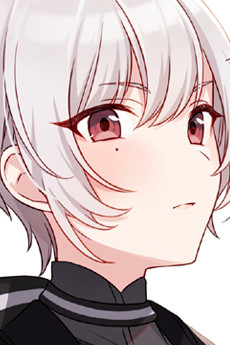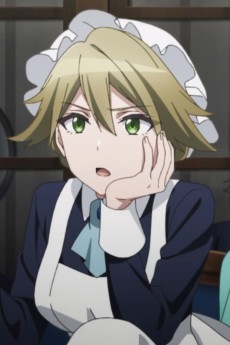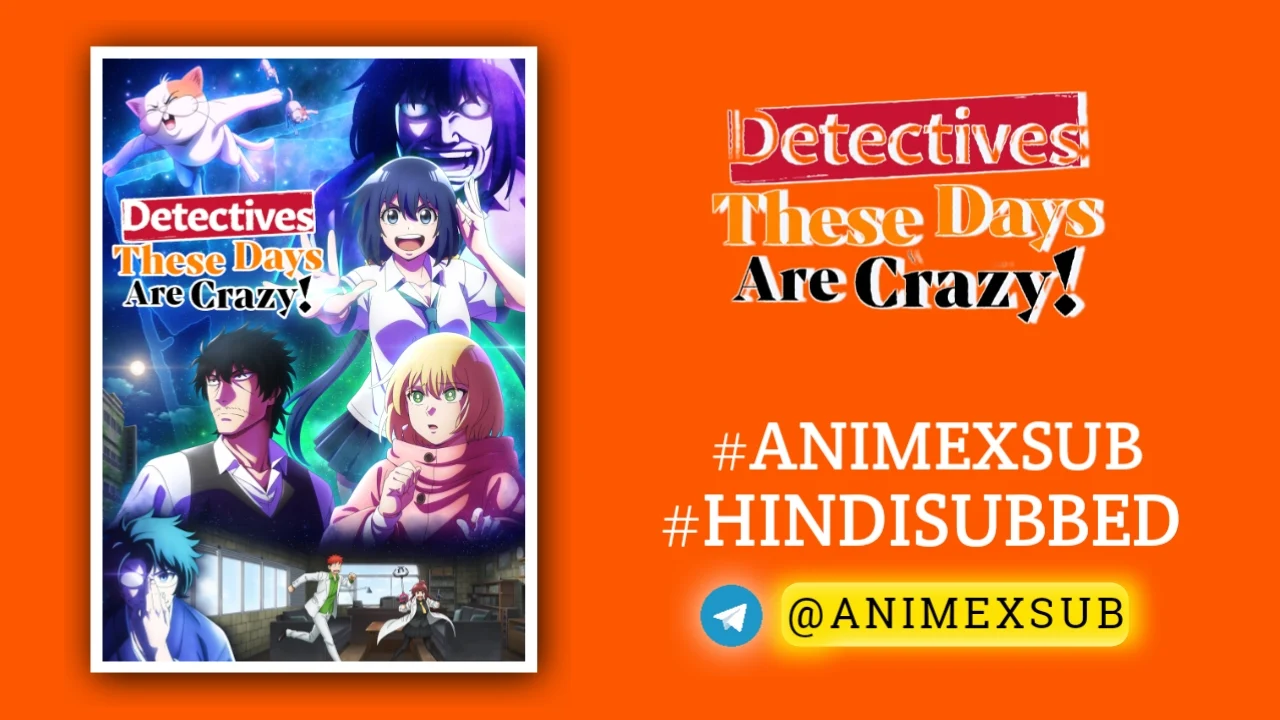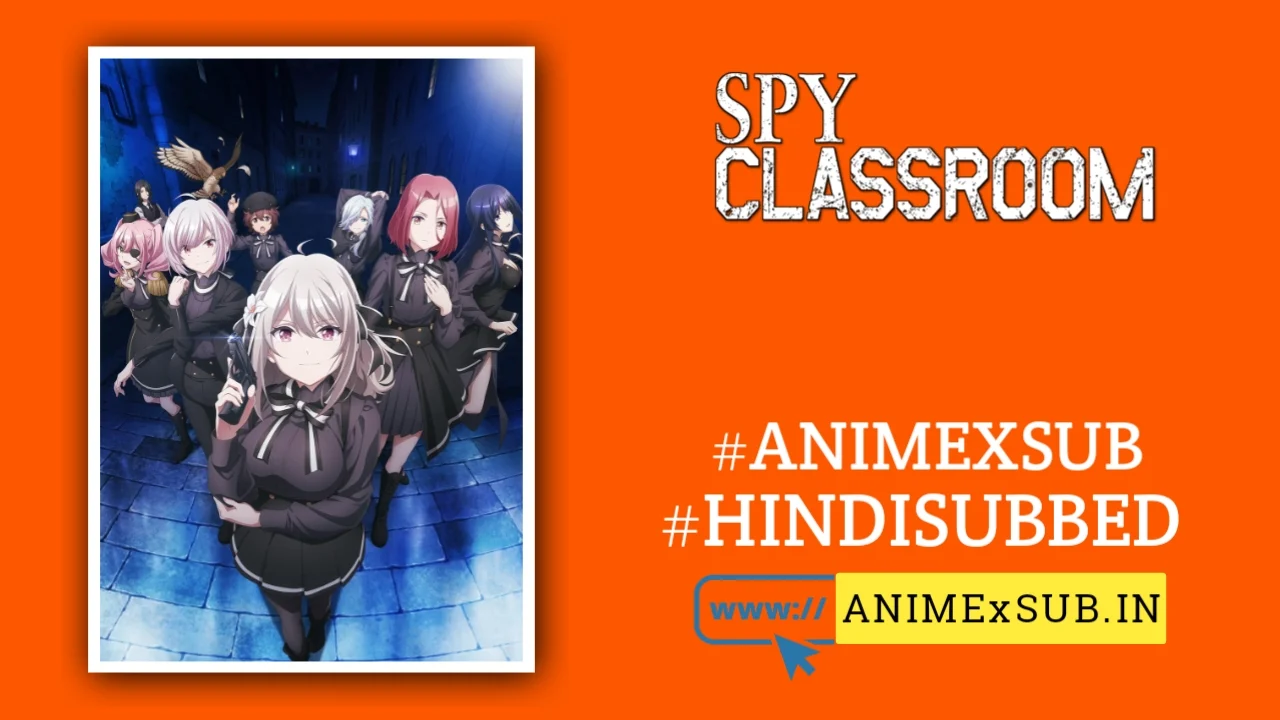
Spy Classroom Season 1 Hindi Subbed [12/12] | Spy Kyoushitsu Hindi Sub!!
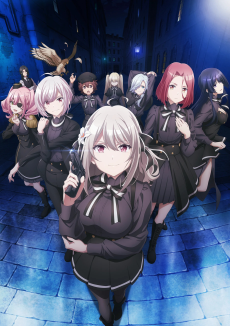
Spy Kyoushitsu
Spy ClassroomSynopsis
Conflict-ravaged nations now deploy covert operatives instead of missiles. Lily is recruited into spy-training… but her practical skills are absolutely abysmal. Desperate to pass, she leaps at the chance to join the mysterious “Tomoshibi” team. Too bad the team is filled with even more hopeless spies. Together they must conquer the Impassible Mission and best their genius instructor, but the true purpose behind their classroom is more harrowing than they can imagine… (Source: HIDIVE)
Watch Trailer
Characters
Spy Classroom Season 1: A Kaleidoscope of Espionage and Emotion in a World of Flawed Brilliance
In the sprawling landscape of anime, where genres collide and narratives vie for attention, Spy Classroom Season 1 emerges as a curious artifact—a blend of spy thriller, character-driven drama, and light-hearted comedy that dares to juggle ambition with imperfection. Adapted from Takemachi’s light novel series and brought to life by Studio Feel under the direction of Keiichiro Kawaguchi, this 12-episode arc, which aired from January to March 2023, invites viewers into an alternate-history Europe where espionage replaces conventional warfare. This is not a polished masterpiece, nor does it aim to be. Instead, Spy Classroom is a raw, uneven, yet captivating exploration of human connection, deception, and the cost of ambition, wrapped in a veneer of cute girls doing spy things. Let’s dissect what makes this series a unique, if flawed, addition to the anime canon, diving deep into its narrative structure, character dynamics, thematic undercurrents, and technical execution.
A World of Spies and Stakes: The Premise
Set in a post-war world reminiscent of Cold War-era Europe, Spy Classroom posits a reality where traditional warfare has been rendered obsolete by advanced weaponry, forcing nations to rely on covert operations. Enter Klaus, a stoic, enigmatic master spy and the sole survivor of the elite Team Inferno, tasked with leading a new squad, Lamplight, composed of seven (later revealed as eight) young women deemed washouts from their respective spy academies. Their mission? An “Impossible Mission” to infiltrate the Galgad Empire and retrieve a bioweapon known as the Abyss Doll—a task with a 90% failure rate. The premise is tantalizing: a group of underdogs, each with a unique ability, must overcome their perceived inadequacies under the guidance of a mentor haunted by his past. It’s a setup that echoes Assassination Classroom but carves its own path through a blend of high-stakes espionage and character-driven slice-of-life moments.
Narrative Structure: A Rollercoaster of Pacing and Potential
The narrative arc of Spy Classroom Season 1 is both its greatest strength and its most glaring weakness. The first three episodes hit the ground running, establishing the stakes with a gripping blend of tension and intrigue. Episode 1 introduces the eclectic cast and Klaus’s unorthodox training methods, while Episode 3 delivers a climactic payoff with the team’s first mission. The pacing here is electric, with clever twists—disguises, gadgets, and double-crosses—that capture the essence of spy fiction. However, the momentum falters post-Episode 3. The series shifts gears into a slower, slice-of-life mode, with episodes 4–7 delving into character backstories and side missions that feel like filler. This abrupt tonal shift, while offering much-needed character depth, disrupts the narrative flow, leaving viewers questioning whether the show wants to be a taut thriller or a cozy character study.
The second half, particularly episodes 8–12, regains some focus with a mission to hunt the assassin Corpse, highlighting the team’s growth and individual talents. Yet, the show’s reliance on exposition-heavy dialogue and premature plot twist reveals—often before the action unfolds—undermines the suspense. For instance, the decision to adapt side-story volumes mid-season, as noted by critics, feels jarring, as these episodes explore backstories that don’t align with the main plot’s urgency. The result is a narrative that feels like a patchwork quilt: vibrant and intricate in parts but stitched together unevenly. Still, this inconsistency is part of the show’s charm, reflecting the chaotic, unpredictable nature of espionage itself.
Characters: A Spectrum of Depth and Missed Opportunities
At its core, Spy Classroom is a character-driven story, and the Lamplight team—Lily (Flower Garden), Grete (Daughter Dearest), Sybilla (Pandemonium), Monika (Glint), Thea (Dreamspeaker), Sara (Meadow), Annette (Forgetter), and Erna (Fool)—is its beating heart. Each girl brings a unique ability, from Lily’s poison immunity to Grete’s strategic genius, but their development is uneven. Lily, the de facto leader, is a klutzy yet determined protagonist whose infectious enthusiasm carries the early episodes. However, her lack of significant growth allows Grete, with her quiet intensity and tactical prowess, to steal the spotlight, particularly in the Corpse arc, where her backstory as a betrayed idealist adds emotional heft.
The other girls, while endearing, often feel like archetypes—Monika’s cool pragmatism, Thea’s seductive charm, Erna’s tragic innocence—whose potential is only partially realized due to the show’s crowded cast. The slice-of-life episodes offer glimpses into their pasts, revealing war orphans shaped by loss and betrayal, but the reliance on expository flashbacks rather than organic character moments limits their impact. Klaus, the enigmatic mentor, is a standout, his deadpan demeanor and abstract blood-red paintings masking a complex grief over his lost team. Yet, his role as a teacher feels underdeveloped, with the “students vs. teacher” dynamic fizzling out after early episodes.
This uneven characterization is a double-edged sword. On one hand, the girls’ distinct personalities and quirks—Erna’s accident-prone nature, Sybilla’s brash loyalty—make even the filler episodes watchable. On the other, the show’s failure to give each character equal attention leaves some, like Annette and Thea, as charming but underdeveloped side notes. The series’ strength lies in its ensemble’s chemistry, with moments of camaraderie and absurd humor (like rock-paper-scissors to decide mission roles) grounding the high-stakes spy work in a relatable humanity.
Themes: Espionage as a Mirror for Trust and Trauma
Beneath its playful exterior, Spy Classroom grapples with weighty themes: trust, betrayal, and the psychological toll of espionage. The show’s world, where spies replace soldiers, underscores the fragility of trust in a landscape of double-crosses. Klaus’s backstory—marked by the loss of Team Inferno and his mentor Guido—serves as a haunting reminder that even the greatest spies are not immune to failure or betrayal. The girls, as war orphans, carry their own scars, their unique abilities often tied to traumatic pasts (e.g., Erna’s accident magnetism stemming from childhood loss). These elements give the series a subtle emotional depth, though it avoids heavy melodrama, maintaining a light action-comedy tone.
The theme of redemption is central, as the “washout” spies strive to prove their worth. The show questions whether talent can be forged from perceived failure, with Klaus’s unorthodox training—tasking the girls to make him surrender—serving as a metaphor for overcoming self-doubt. However, the narrative’s reliance on shock value and contrived plot twists sometimes undercuts these themes, as critics note that the spy missions lack the cleverness of genre peers like Spy x Family. Still, the balance of levity and tragedy—such as Grete’s arc contrasting her ruthless competence with her longing for connection—offers a nuanced take on what it means to be a spy in a world where trust is a luxury.
Technical Execution: A Visual and Auditory Feast with Flaws
Studio Feel’s animation is a highlight, with vibrant character designs by Sumie Kinoshita that capture each girl’s personality through distinct outfits and expressive movements. The action scenes, while sparse, are fluid and engaging, particularly in the Galgad Empire infiltration. The show’s use of color—Klaus’s blood-red paintings, the muted tones of the post-war setting—creates a striking aesthetic that mirrors its tonal shifts. However, the animation budget feels stretched in quieter episodes, with static shots and heavy dialogue replacing dynamic visuals.
The soundtrack is a mixed bag. The opening theme, “Tōka” by nonoc, evokes classic spy films with its jazzy undertones, while multiple ending themes tied to specific characters (e.g., Erna’s “Fool on the Secret” by Inori Minase) add a personal touch. Yet, the background music is unremarkable, failing to elevate key moments. The voice acting, featuring talents like Yūichirō Umehara (Klaus) and Sora Amamiya (Lily), is uniformly excellent, bringing nuance to both comedic and dramatic scenes.
Critical Reception: A Polarizing Experiment
Spy Classroom Season 1 has sparked divisive reactions. Some praise its character-driven charm and strong start, with reviewers calling it a “competent, consistently enjoyable light action comedy” that delivers on its premise of cute girls learning espionage. Others, however, lament its wasted potential, citing poor pacing, reliance on fan service, and a lack of narrative focus. One critic described it as a “prime example of what you shouldn’t do in anime production,” pointing to its tonal inconsistency and weak spy elements. The adaptation’s choice to prioritize side stories over the main plot has been a particular point of contention, with fans of the light novels arguing it fails to capture the source material’s magic. Yet, even detractors acknowledge the show’s visual polish and likable cast, with scores ranging from 4/10 to 8/10 across reviews.
The Verdict: A Flawed Gem Worth Exploring
Spy Classroom Season 1 is a paradox—a series that soars in its ambition but stumbles in its execution. Its blend of espionage, comedy, and character drama is refreshing, offering a unique take on the “cute girls doing things” trope with a spy thriller twist. The strong start, vibrant cast, and thematic depth make it a compelling watch, but its uneven pacing, underdeveloped characters, and reliance on expository storytelling hold it back from greatness. For fans of Assassination Classroom or Princess Principal, it offers enough charm and intrigue to warrant a look, especially for those who enjoy character-driven narratives over airtight plots. For others, it may feel like a missed opportunity—a spy mission that thrills but doesn’t fully detonate.
Ultimately, Spy Classroom Season 1 is a testament to the beauty of imperfection. It’s a show that dares to be messy, to blend genres and tones in a way that feels both chaotic and authentic. As the series sets the stage for a second season, which early reception suggests improves on these flaws, it leaves viewers with a question: can a team of washouts become legends? For now, the answer lies in the journey—a bumpy, vibrant, and undeniably unique ride through a world of spies and secrets.
Final Score:
- Plot: 6/10
- Characters: 7/10
- Animation: 8/10
- Soundtrack: 7/10
- Enjoyment: 7.5/10
- Overall: 7/10
— Don’t Forget to Watch Season 2 In Hindi Sub, That Also Available on ANiMExSUB.iN !!
Support Our Anime Community!
Love watching the latest anime? Help us keep uploading new episodes by join telegram channel ❤️
Join Now!



